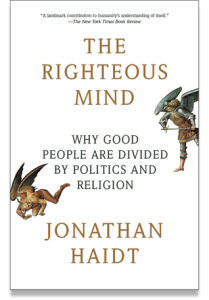 William O. Douglas joined the US Supreme Court in 1939 and served until 1975. Soon after joining the Court, the then Chief Justice, Charles Evans Hughes, told Douglas that almost all judicial decisions on the high court are emotional decisions. That is, Supreme Court justices come to a fairly quick emotional decision about a case and then spend time seeking out legal reasoning to justify that decision.
William O. Douglas joined the US Supreme Court in 1939 and served until 1975. Soon after joining the Court, the then Chief Justice, Charles Evans Hughes, told Douglas that almost all judicial decisions on the high court are emotional decisions. That is, Supreme Court justices come to a fairly quick emotional decision about a case and then spend time seeking out legal reasoning to justify that decision.
Douglas was initially skeptical this was true, but after several years on the Court he concluded that Chief Justice Hughes was correct. The overwhelming majority of Supreme Court decisions started as emotional decisions.
While some might want to imagine decisions at the heart of our justice system are purely the result of cold, rational legal analysis, there is nothing unusual in how Supreme Court justices arrive at their decisions. They’re just being human. We now have several decades of psychological research showing that most of our decisions start as emotional decisions and that we use reasoning after the fact to justify these decisions.
This psychological truism, that most decision-making is emotionally driven, has great relevance for us in the educational choice movement. We are engaged in an intense political and public relations struggle and we need to better understand the psychology of judgement, decision-making and persuasion if we are to prevail. Hence, my recommendation that all education choice advocates read The Righteous Mind: Why Good People Are Divided by Politics and Religion.
Jonathan Haidt’s easy-to-read book uses decades of psychological research to explain how and why most of our decisions about moral and political issues are controlled by our emotions and our unconscious minds. The research he reviews also illustrates how tribal we are and how predisposed we are to conform emotionally and rationally to our tribe’s world view. This conformity means that objective evidence has a hard time penetrating our tribal beliefs, which is why disagreements between tribes — such as the disagreements between pro and anti-educational choice groups — are often so difficult to resolve.
I regularly see the effects of tribal conformity and emotional decision-making in discussions with my long-time teacher union friends. When we haven’t spoken for several months we have a difficult time initially agreeing on anything. They stick to their tribal talking points (i.e., tax credit scholarships take money from district schools; private schools are not accountable; educational choice is a scheme by Republicans to privatize public education), and I stick to mine (i.e., all your assertions are wrong). After an hour or so we each become less tribal and our discussion becomes more open, nuanced and productive. But this transition occurs because these are long-time friends who generally trust and respect me, as I do them. When I speak with opponents I’ve never met, getting past our pre-programed tribal talking points is much more difficult.
The broader educational choice movement faces a similar conundrum.
We spend a great deal of resources promulgating arguments based on evidence. For example, students who use Florida tax credit scholarships make the same average academic gains annually as their peers from all income levels nationally. Studies have found the program produces savings that might actually help public school funding. Like other private school choice programs, the scholarships have been shown to have a positive effect on public-school performance. These findings have been reinforced by numerous academic studies, and even recent rulings by a Leon County circuit court judge. But opponents of the program constantly repeat arguments that fly in the face of this large body of empirical evidence.
Haidt’s book helps illuminate why (and why similar sins are common on both sides of the school choice debate). With few exceptions, people use evidence not to shape their moral and political opinions, but to justify gut-level judgements they have already made.
The research he presents is very clear: building trust and making emotional connections is a precursor to effective communications across different tribes. Without first finding some emotional moral common ground, quality dialogue with those who disagree with us is seldom possible.
Just as the insights into judicial decision making Chief Justice Hughes shared with Justice Douglas enabled Douglas to be a more effective justice, the insights in Haidt’s book can help education choice advocates be more effective persuaders. Trading talking points won’t be enough. We have to form deeper connections with those we aim to persuade. Most of our opponents will never be able to step outside their tribal bubble and hear us, but some will, and we should focus on them.
Understanding that educational choice advocates are also susceptible to tribal conformity and being blinded by our own group think is another important lesson I took from Haidt’s book. We’re all human, which means a healthy dose of self-skepticism is generally a good thing.


